Weed Management in Chile
Circular 548
Richard D. Lee, NMSU-CES Extension Weed Scientist
Jill Schroeder, NMSU-EPPWS Weed Scientist
College of Agriculture, Consumer and Environmental Sciences, New Mexico State University (Print Friendly PDF)
Weeds impact chile production in several ways. First, chile peppers emerge slowly from the soil and continue to grow slowly, making them more susceptible to competition from weeds for sunlight, nutrients, water, and space. Research at NMSU has shown that weeds emerging after thinning can reduce yields even if fields are kept clean prior to thinning. Second, weeds in the field at the end of the growing season interfere with the harvesting process and have usually produced seed that allows the weed to complete its ultimate goal—to make seed that will allow the weed to come back next year.
Weeds also serve as alternate hosts for other pests, including nematodes, insects, and viruses. Most of the common weeds in New Mexico chile fields, including yellow and purple nutsedge (Cyperus esculentus and C. rotundus), serve as alternate hosts for root-knot nematodes. Silverleaf nightshade (Solanum elaeagnifolium) and field bindweed (Convolvulus arvensis) are the the most important overwintering hosts for four viruses found in Southern New Mexico chile. Silverleaf nightshade and other weeds in the Solanaceae family are also alternate hosts of pepper weevil in other regions.
Effective weed management requires the grower to be aware of all available management tools. Called “Integrated Weed Management” these principles will enable growers to manage the problem of weeds in the chile field more effectively.
Principles of Weed Management
Weed Identification
The first step to weed management in chile is correct identification. Not only is it important to know the names of the weeds, but it is also critical to know and understand the life cycle and reproductive capacity of the plant. Based on the life cycle—which includes germination, vegetative growth, flowering, seed set, and death—grasses and broadleaves have been grouped into the following areas:
A. Annuals. Weeds that germinate and complete their life cycle within one year. These weeds spread and reproduce only through seed production.
-
- Summer Annuals. Plants that germinate throughout the spring and summer and complete their life cycle in the fall of the same year.
| Grasses | Broadleaves |
| Barnyardgrass | Kochia |
| Crabgrass | Lambsquarters |
| Foxtails | Morningglory species |
| Junglerice | Oakleaf thornapple |
| Sandbur | Pigweed species |
| Prostrate spurge | |
| Puncturevine | |
| Russian thistle | |
| Spurred anoda | |
| Wright groundcherry |
- Winter Annuals. Plants that germinate in the fall of the year, overwinter, and complete their life cycle in the following spring.
Grasses Broadleaves Downy brome Flixweed Rescuegrass London rocket Shepherdspurse Tansymustard
B. Biennials. Plants that require two years to complete their life cycle. They spread and reproduce by seed production only. Common mallow is an example.
C. Perennials. Plants that live more than two years. They reproduce by seed and vegetative reproductive structures, such as root buds, rhizomes, crowns, tubers, stolons, bulbs, etc.
- Simple Perennials. Plants that do not spread underground vegetatively. They spread and reproduce by seed production, crown buds, and cut root segments.
Grasses Broadleaves Dandelion Plantain species - Creeping Perennials. Plants that spread vegetatively by means of the tubers, rhizomes, root buds, etc., as well as by seed.
Grasses Broadleaves Sedges Bermudagrass Field bindweed Purple nutsedge Johnsongrass Silverleaf nightshade Yellow nutsedge Texas blueweed
The following weeds have been identified as plants of greatest concern to New Mexico chile producers (see color plates):
- Barnyardgrass
- Field bindweed
- Johnsongrass
- Lambsquarters
- Morningglory species
- Nutsedge, purple and yellow
- Oakleaf thornapple
- Pigweed species
- Silverleaf nightshade
- Spurred anoda
- Wright groundcherry
A more complete listing of some of the weeds found in New Mexico chile fields is presented in table 1.
| Table 1. Selected list of weeds found in New Mexico chile fields. | ||
| Common name | Scientific name | Life cycle |
| Annual morning glories | ||
| Ivyleaf morningglory | Ipomoea hederacea (L.) Jacq. | Sum. annual |
| Red morningglory | Ipomoea coccinea L. | |
| Tall morningglory | Ipomoea purpurea (L.) Roth | Sum. annual |
| Annual prostrate spurges | Euphorbia spp. | Sum. annual |
| Annual sunflower species | Helianthus spp. | Sum. annual |
| Barnyardgrass | Echinochloa crus-galli (L.) Beauv. | Sum. annual |
| Bermudagrass | Cynodon dactylon (L.) Pers. | C. perennial |
| Buffalobur | Solanum rostratum Dun. | Sum. annual |
| Common mallow | Malva neglecta Wallr. | Biennial |
| Common purslane | Portulaca oleracea L. | Sum. annual |
| Crabgrass species | ||
| Large crabgrass | Digitaria sanguinalis (L.) Scop. | Sum. annual |
| Smooth crabgrass | Digitaria ischaemum (Schreb. ex Schweig) Schreb. ex Muhl. | Sum. annual |
| Downy brome | Bromus tectorum L. | Win. annual |
| Field bindweed | Convolvulus arvensis L. | C. perennial |
| Flixweed | Descurainia sophia (L.) Webb. ex Prantl | Win. annual |
| Foxtail species | ||
| Green foxtail | Setaria viridis (L.) Beauv. | Sum. annual |
| Yellow foxtail | Setaria glauca (L.) Beauv. | Sum. annual |
| Jimsonweed | Datura stramonium L. | Sum. annual |
| Johnsongrass | Sorghum halepense (L.) Pers. | C. perennial |
| Junglerice | Echinochloa colona (L.) Link | Sum. annual |
| Kochia | Kochia scoparia (L.) Schrad. | Sum. annual |
| Lambsquarters | Chenopodium album L. | Sum. annual |
| London rocket | Sisymbrium irio L. | Win. annual |
| Nightshade species | ||
| Black nightshade | Solanum nigrum L. | Sum. annual |
| Cutleaf nightshade | Solanum triflorum Nutt. | Sum. annual |
| Hairy nightshade | Solanum sarrachoides Sendtner | Sum. annual |
| Nutsedge species | ||
| Purple nutsedge | Cyperus rotundus L. | C. perennial |
| Yellow nutsedge | Cyperus esculentus L. | C. perennial |
| Oakleaf thornapple | Datura quercifolia | Sum. annual |
| Pigweed species | ||
| Carelessweed or Palmer amaranth |
Amaranthus palmeri S. Wats. | Sum. annual |
| Prostrate pigweed | Amaranthus blitoides S. Wats. | Sum. annual |
| Redroot pigweed | Amaranthus retroflexis L. | Sum. annual |
| Plantain | Plantago spp. | S. perennial |
| Puncturevine | Tribulus terrestris L. | Sum. annual |
| Rescuegrass | Bromus catharticus Vahl | Win. annual |
| Russian thistle | Salsola iberica Sennen | Sum. annual |
| Sandbur | Cenchrus species | Sum. annual |
| Shepherdspurse | Capsella bursa-pastoris (L.) Medic. | Win. annual |
| Silverleaf nightshade | Solanum elaeagnifolium Cav. | C. perennial |
| Spurred anoda | Anoda cristata (L.) Schlecht. | Sum. annual |
| Tansymustard | Descurainia pinnata (Walt.) Britt | Win. annual |
| Texas blueweed | Helianthus ciliaris DC. | C. perennial |
| Texas blueweed | Physalis wrightii Gray | Sum. annual |
Management Options
In developing a management program, consider the following basic strategies:
Cultural Weed Management
The bottom line for cultural weed management is giving the chile crop the competitive edge. Even though chile is not very competitive, growers can give the crop an advantage by maintaining recommended soil fertility, managing or avoiding fields with soil-borne diseases or nematodes, and planting high-quality seed at the proper time. Taking time to know what weed pressure to expect will aid in deciding whether it is a good idea to put chile in that particular field. Major weed problems can be reduced by avoiding fields that have a history of being infested with weeds such as silverleaf nightshade, field bindweed, yellow nutsedge, or purple nutsedge.
Crop rotation is an effective way of reducing weed problems in chile fields. Row crops such as cotton and field corn offer good herbicidal options for managing weeds such as field bindweed, nutsedge species, and morningglory species. Alfalfa is also a good rotation crop because the frequent cuttings eliminate many weedy species.
Growers cannot control what “Mother Nature” will deal out, but by giving the chile plant the best chances available for success, the odds will be more in their favor.
Mechanical Weed Management
The use of cultivation as a weed management tool is as old as time and is still quite effective in managing annual weeds if done when the weeds are small. With perennial weeds such as Johnsongrass, using cultivation for management often aids in spreading this plant by breaking up and moving around underground vegetative reproductive structures. A situation called “cultivator blight” can occur as the cultivator gets too close to the young plant and eliminates the plant along with the weeds.
Cultivation can be used to provide some weed management within the row by moving soil around the base of the plant when the chile plants are around 5" tall. This layer of soil (dust mulch) will prevent some weeds from emerging by changing the soil environment around the chile plant from one favorable for the weed germination to one that is unfavorable.
Managing weeds in the chile row requires hand hoeing to eliminate weed species not managed effectively through other means. The expense of hand weeding can be reduced by close cultivation before thinning, as this will allow the hoe crew to move more quickly through the field.
Chemical Weed Management
Using herbicides as a means to manage weeds is one of the tools available to the grower. When considering herbicides, growers must first determine if they have the equipment necessary to apply these chemicals correctly. It may be to the grower’s advantage to have the herbicide custom-applied rather than go to the expense of building a boom sprayer, which can apply broadcast applications, as well as directed or shielded applications.
When combined with good cultural and mechanical practices, herbicides offer control for many weed species. The choice of herbicide depends upon the weed species, application timing, and the grower’s cultural practices.
Ways herbicides may be applied in chile:
| Type of application | Description and comments |
| Prior to planting | Herbicide is applied to control any emerged weeds prior to planting. When using such herbicides, be sure to follow the labelled application-toplanting-time interval. |
| Preplant incorporated | Herbicide is applied to the soil surface and mechanically incorporated. The chile is then planted following the application. Label guidelines point out the time interval from application to incorporation. These herbicides affect germinating weed seeds and cannot be water incorporated effectively. |
| Preemergence | Herbicide is applied to the soil surface following chile planting and incorporated through irrigation. These herbicides affect the germination of weed seeds and will not control emerged weeds. |
| Postemergence | Herbicide is applied to emerged weeds, absorbed through the leaves and stems, and translocates to the site of action. It is important to apply these herbicides to actively growing weeds. Weeds stressed due to environmental conditions will not absorb and translocate the applied herbicide as effectively. The use of adjuvants may be required with these herbicides to improve absorption and retention on the leaf surface. |
| Shielded | Herbicide is applied postemergence to weeds and chile, with the chile crop “shielded” from the herbicide spray. This requires special equipment to protect the chile crop. |
| Post-directed | Herbicide is applied postemergence to the weeds with the application “directed” to the soil at the base of the chile plant. Such application may also require shields to protect the chile plants. Herbicides used in this fashion may or may not require weed-free soil at the time of application. In those requiring the area to be weed free, the application is usually made following cultivation. Such herbicides must also be incorporated mechanically or with irrigation water in order for proper placement of the herbicide. |
Preventive Weed Management
With preventive weed management, the grower utilizes field scouting to identify any new weed species that may be finding their way into the field. It also involves managing the weeds in the fence rows and ditch bank areas. Managing weeds such as field bindweed and silverleaf nightshade in noncrop areas has been found to aid in the management of viral diseases associated with chile peppers in New Mexico.
Management Plan Process
With all the options available to the grower, a management plan can be developed. Taking into consideration the status of the field with regard to fertility, crop rotation practices—both past and future, and weed pressure history will improve the grower’s chances of getting a crop established. Timely cultivations will assist in reducing the level of annual weed infestation, but may increase pressure from the perennial weeds.
The cultural practices for field preparation vary greatly throughout the state. The following is a general scheme of field preparation processes within the state. Individual growers may have different successful procedural plans and will not need to change them.
Step 1. Spring Preparation of the Field. During this step existing winter annual weeds are eliminated from the field.
Step 2. Forming the Beds. Irrigation practices will vary during this phase of field preparation.

Step 3. Shaping the Seed Beds. In many cases seed beds are shaped by going through the field twice, each time breaking down the bed in order to prepare the field for planting.

Step 4. Planting the Seed and Capping. Seed is planted in the seed bed. Following the planting, the beds are capped with 3–4" of soil.

Step 5. Removing the Cap. By removing the cap, the young chile plant is able to begin growing after taking advantage of better initial growing conditions within the cap.

Step 6. Chile Growth. This step involves irrigating, cultivating, and thinning operations that are employed during the chile growth.
Again, it is important to note that each individual grower may have a different procedure. Certain growers will form their beds, irrigate, and plant into the bed without prior shaping. Others won’t form the beds; rather they will go with a shaped bed prior to planting. If the process currently followed is sufficient for the current operation, there is no need to change.
Tied into these field preparation steps and the growth of the crop is the application of herbicides labelled for chile production. When using preplant incorporated herbicides with these management strategies, the grower needs to take precautions to not move “nonherbicide” treated soil into the seed bed. The key to success with soil-applied herbicides is effective, uniform incorporation, followed by limited disturbance of the herbicide-treated layer of soil during subsequent field operations.
Herbicides Labelled for Chile Production in New Mexico
In considering herbicides labelled for chile production in New Mexico, the following scheme represents the different stages or steps chile production, corresponding to the different steps of field preparation previously mentioned.
| Timing of application for herbicides labelled for chile in New Mexico. | ||||
| Prior to planting |
Before crop and weeds emerge |
Before crop emerges but weeds emerged |
Chile specific height |
Chile emerged, weeds specific height |
| Bensulide | Bensulide | Paraquate | DCPA | Sethoxydim |
| Clomazone | Metolachlor | |||
| Glyphosate | Trifluralin | |||
| Napropamide | ||||
| Common Name | Trade Name | Type of Application | Rates of Application |
| Bensulide | Prefar 4EC | Preplant incorp. Preemergence |
4–5 qt Prefar 4EC/a |
| Comments: A preplant incorporated and preemergence herbicide that controls annual grasses and certain broadleaf weeds, such as pigweed and purslane. Apply in 10–50 gal of water and incorporate, the same day, to a depth of 1–2". Refer to label for rotation and plant back restrictions. New Mexico data indicates the preplant incorporated application provides better weed control than the preemergence application. | |||
| Clomazone | Command 4EC | Preplant incorp. | 0.5–2.0 pt Command/a |
| Comments: A preplant-incorporated herbicide that controls annual grasses and broadleaves. Strong point is the control of spurred anoda. Rates of application are soil texture dependent. Incorporate to a depth of 1" and plant seed under the treated zone of soil. Must be FMC certified in order to use the product. Weak on the control of pigweed species and Wright groundcherry. Refer to label for rotation restrictions. | |||
| DCPA | Dacthal W75 | Post-directed | 6–14 lb Dacthal W75/a |
| Comments: A preemergence (to the weeds), postemergence (to the chile) herbicide to be applied when direct-seeded chile has reached a height of 4–6" tall or 4–6 weeks following transplanting. Rates of application are soil texture dependent. Applications need to be mechanically incorporated. | |||
| Glyphosate | Roundup 4S | Postemergence | Rates are weed specific |
| Comments: A nonselective foliar herbicide that can be used to control annual and perennial grasses and broadleaves prior to planting chile. Application rates are weed species dependent. Efficacy is reduced when applied to stressed weeds. By applying in 3–20 gal of water per acre, control can be improved. The addition of a surfactant is necessary to improve control of desired weed species. | |||
| Metolachlor | Dual 8E | Post-directed | 2 pt Dual 8E/a |
| Comments: A preemergence herbicide that is applied postemergence to chile. This application is a “State Local Needs” or 24(c) label and is valid only in the state of New Mexico. Associated with this application is the need for the grower to sign a waiver of liability. The application is to be made when the chile has 4–6 leaves and must be made to clean-tilled soil. Emerged weeds will not be controlled through the use of this herbicide. The strong point of the application is the control of yellow nutsedge. Metolachlor will not control purple nutsedge, but will also give control of many annual grasses and and certain annual broadleaf weeds. | |||
| Napropamide | Devrinol 2EC Devrinol 50 DF |
Preplant incorp. | 2–4 qt Devrinol 2EC/a 2–4 lb Devrinol 50DF/a |
| Comments: A preplant incorporated herbicide that controls most annual grasses and broadleaves, except nightshades, mustards, and groundcherries. Incorporate same day following application. Rate of application depends on soil texture. | |||
| Paraquat | Gramoxone Extra | Postemergence | 2–3 pt Gramoxone Extra/a |
| Comments: A nonselective foliar herbicide used to control emerged weeds in the chile field prior to the emergence of the chile crop. Paraquat offers no residual control and is effective only on annual weeds. Use the higher rates when dealing with heavier infestations. Paraquat is a restricted use pesticide and requires the user to be certified. | |||
| Sethoxydim | Poast 1.5EC | Postemergence | 1.5 pt Poast 1.5EC/a |
| Comments: A postemergence herbicide that offers control of annual and perennial grasses. Total amount of sethoxydim to be applied in one growing season is 4.5 pt of product. Addition of crop oil concentrate is essential for adequate control. Grassy weeds must be actively growing at the time of application. Do not cultivate 5 days prior to nor 7 days following the application. | |||
| Trifluralin | Treflan 4EC Treflan 5 Treflan TR-10 |
Post-directed | 1–2 pt Treflan 4EC/a 0.8–1.6 pt Treflan 5/a 5–10 lb Treflan TR-10/a |
| Comments: A preplant incorporated herbicide for transplant chile. Apply and incorporate prior to planting the transplant chile. Rates depend on soil texture. Incorporate within 24 hr following application. Good control of annual grasses and broadleaves. | |||
| In New Mexico we have a 24(c) label for the application of Treflan 4EC, 5, and TR-10 as a postemergence incorporated application. The following information pertains to that particular label: •Apply Treflan as a postemergence incorporated treatment when chile plants are 5–7" tall. Application is to be made using ground application equipment using drop nozzles and spray shields to keep spray off the plants and to direct the spray to the soil surface. Cultivation is required following application to move the herbicide into the zone of herbicidal activity. Rates of application are soil texture dependent. For Treflan 4EC, 0.75 to 2.0 pt Treflan 4EC/a.; for Treflan 5, 0.6–1.6 pt Treflan 5/a; and for Treflan TR-10, 3.75–10 lb Treflan TR-10/a. • Growers must sign a waiver of liability for this application. |
|||
When considering the use of an herbicide, it is important to make sure the label directions are understood and followed. Any deviation from the label may result in crop injury, poor weed control, extended carry-over problems, or reduction in quality of final chile crop.
Even under situations where it is felt the label directions for a particular herbicide were followed, problems may occur. In evaluating nonperformance or injury situations, several factors can be considered:
- Worn or improperly calibrated application equipment can result in an improper application of the herbicide.
- Applications under improper application conditions, such as windy conditions may result in an off-target drift problem where a desirable crop is affected adversely.
- Application of the wrong herbicide may result in the lack of control of the desired weed species. Susceptible weed species can be identified by reading the label. If the weed in question is not on the herbicide label, chances are the herbicide of choice will not control that particular weed.
- Applying the herbicide at the wrong time will also be ineffective. Preemergence herbicide will control weeds as they are germinating, and will not control weeds that have already emerged.
Summary
Taking time to learn weeds commonly found in the fields will aid growers in making correct management decisions. Whether it translates to the use of a particular herbicide or to growing a different crop, weed identification is the first step to managing weeds in chile effectively.
When developing a management plan, be sure to consider all the available management options. Using all the tools in an integrated fashion will greatly improve the chances for effective weed management.

Fig. 1. Barnyardgrass — seed head.

Fig. 2. Field bindweed — population.

Fig. 3. Field bindweed — flower.

Fig. 4. Johnsongrass.

Fig. 5. Johnsongrass — seed head.

Fig. 6. Kochia — mature plant.

Fig. 7. Kochia — seedling (0.5" dia.).

Fig. 8. Kochia — leaf arrangement.

Fig. 9. Common lambsquarters — seedling (1.5" dia.).

Fig. 10. Common lambsquarters — seed head.

Fig. 11. Annual morningglory species — mature plant.

Fig. 12. Annual morningglory species — flower.

Fig. 13. Annual morningglory species — flower.

Fig. 14. Mature Yellow nutsedge — note long floral bracts.

Fig. 15. Mature Purple nutsedge — note short floral bracts.

Fig. 16. Oakleaf thornapple — mature plant.

Fig. 17. Oakleaf thornapple — leaf and flower.
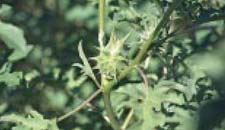
Fig. 18. Oakleaf thornapple — fruiting structure.
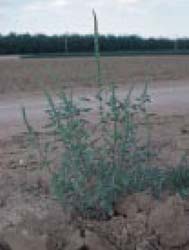
Fig. 19. Pigweed species — mature plant.
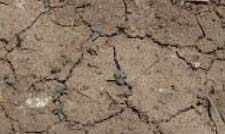
Fig. 20. Pigweed species — seedlings.
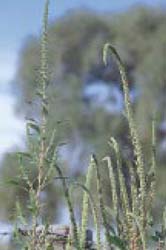
Fig. 21. Pigweed species — seed head.
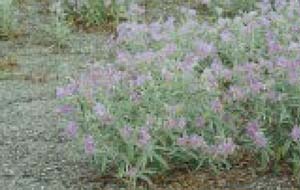
Fig. 22. Silverleaf nightshade — mature plant.
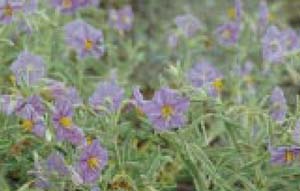
Fig. 23. Silverleaf nightshade — closeup — note flower and spines on plant.
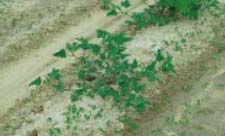
Fig. 24. Spurred anoda — mature plant.
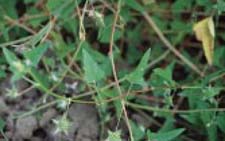
Fig. 25. Spurred anoda — leaf arrangement.
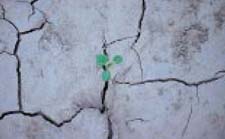
Fig. 26. Spurred anoda — seedling (about 0.75" dia.).
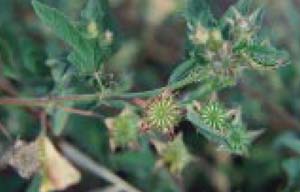
Fig. 27. Spurred anoda — fruiting structure.
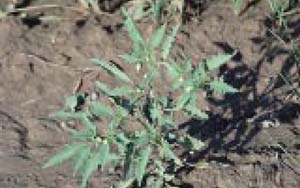
Fig. 28. Wright groundcherry — mature plant.

Fig. 29. Wright groundcherry — fruiting structure.
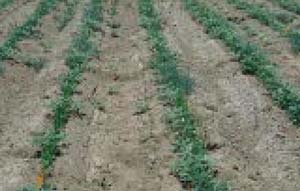
Fig. 30. Wright groundcherry — infestation in chile.
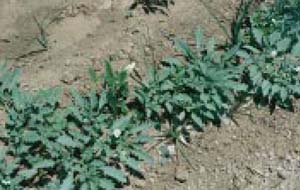
Fig. 31. Wright groundcherry — infestation in chile.
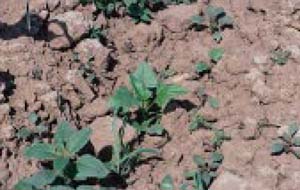
Fig. 32. Seedling weeds in chile — Russian thistle and Pigweed.
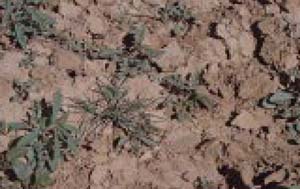
Fig. 33. Seedling weeds in chile — Pigweed and Spurred anoda.
To find more resources for your business, home, or family, visit the College of Agricultural, Consumer and Environmental Sciences on the World Wide Web at pubs.nmsu.edu.
Contents of publications may be freely reproduced for educational purposes. All other rights reserved. For permission to use publications for other purposes, contact pubs@nmsu.edu or the authors listed on the publication.
New Mexico State University is an equal opportunity/affirmative action employer and educator. NMSU and the U.S. Department of Agriculture cooperating.
December 1995, Las Cruces, NM.


